Our Verdict
The Radeon RX 5500 XT 4GB is a good budget card, and the architectural enhancements help it outperform the previous generation AMD hardware, but the limited VRAM can be a handicap.
For
- Good overall value
- Faster than the 570/580
- Efficient Navi architecture
Against
- Only 4GB VRAM
- Requires 8-pin power
PC Gamer's got your back
Today, AMD is finally launching its retail Radeon RX 5500 XT series of graphics cards. They join the existing OEM-only RX 5500 models that you might find in some pre-built PCs, only with slightly higher clockspeeds and the option to upgrade to 8GB GDDR6 memory. That will cost you an extra $30, and I'll have a separate review for that later, but I'm starting with the 4GB card. That amount of VRAM feels a bit constricting in some games, but it helps keep the price down. The direct competition for the 4GB model is Nvidia's GeForce GTX 1650 Super, also with 4GB VRAM.
At the heart of the RX 5500 XT sits AMD's latest GPU, the Navi 14. It has fewer GPU cores and half the memory bandwidth of the larger Navi 10 found in the RX 5700 series, but it's also about half the price. AMD's Navi / RDNA architecture otherwise remains unchanged: There's no ray tracing acceleration, but a reworking of many elements can yield 25 percent better performance per core, combined with higher clockspeeds. We've already seen that the RX 5700 XT often beats the theoretically faster Radeon VII, thanks to the improved architecture, and RX 5500 XT should bring some added competition and performance to the budget sector.
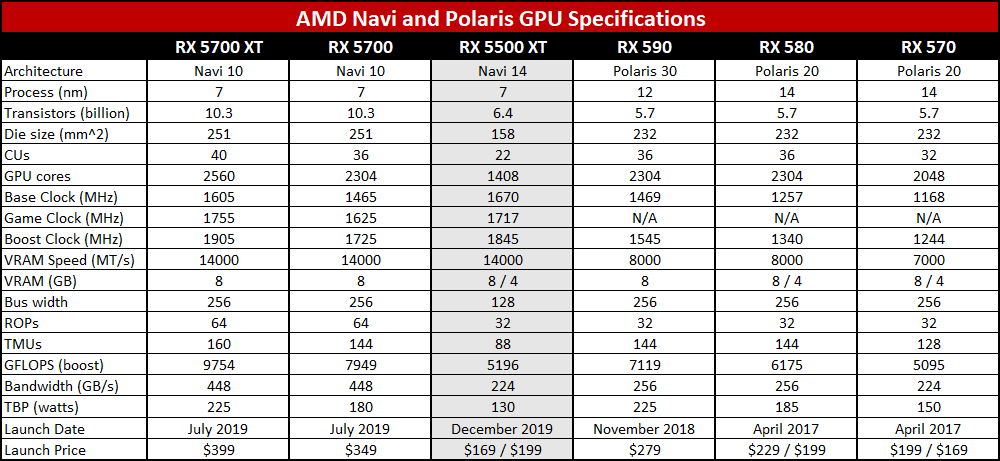
Both RX 5500 XT models have the same basic specifications, only with twice as much memory on the 8GB card. 14Gbps GDDR6 with a 128-bit memory interface means the GPUs have 224GB/s of bandwidth. That's half what you get with RX 5700 and the same as AMD's outgoing RX 590 and RX 580 cards, or 17 percent more than the GTX 1650 Super. Core counts also favor AMD's 5500 XT hardware, though generally speaking AMD's cores aren't quite as fast as Nvidia's cores. Still, with ten percent more cores than the 1650 Super and slightly higher clockspeeds, it's going to be close.
Pricing basically matches Nvidia's latest offerings, at $169 for the 4GB model and $199 for the 8GB model—technically that's $10 more than the 1650 Super looking at the 4GB card. However, AMD gives you three months of Xbox Game Pass plus Monster Hunter World: Iceborne Master Edition (when it comes out), which tips the scale in favor of AMD's pricing.
If you're looking at the next step up in performance, the 8GB card from AMD has the same GPU but more memory, while Nvidia shifts to a different GPU. The 1650 Super has 4GB GDDR6 and 1280 CUDA cores, while the GTX 1660 uses 6GB GDDR5 memory with 1408 CUDA cores. In practice, the 1660 is only slightly faster than the 1650 Super at lower settings (eg, 1080p medium quality), but the additional memory and cores make it 10-20 percent faster at higher settings and resolutions.
With budget GPUs, AMD and Nvidia are basically at feature parity. Nvidia is happy to push RTX and ray tracing on the high-end models, but the GTX line targets games with traditional rendering. (You need at least a 6GB GPU to try and run ray tracing, and performance is generally low enough that you wouldn't want to play that way.) TDP slightly favors Nvidia, but it's not going to make much of a difference in the real world. If your PSU has the required 6-pin or 8-pin power connector, you can safely run either GPU.

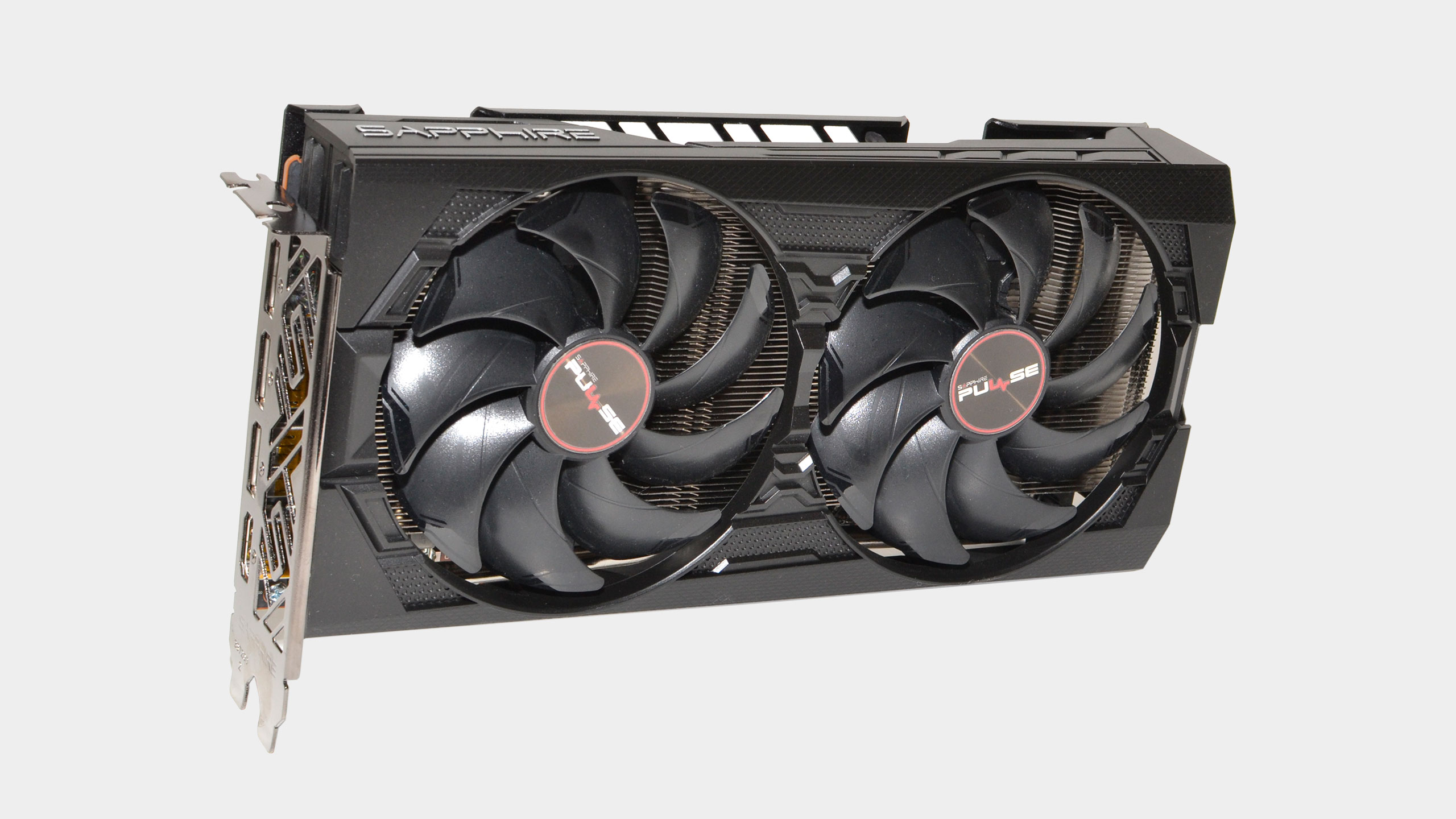


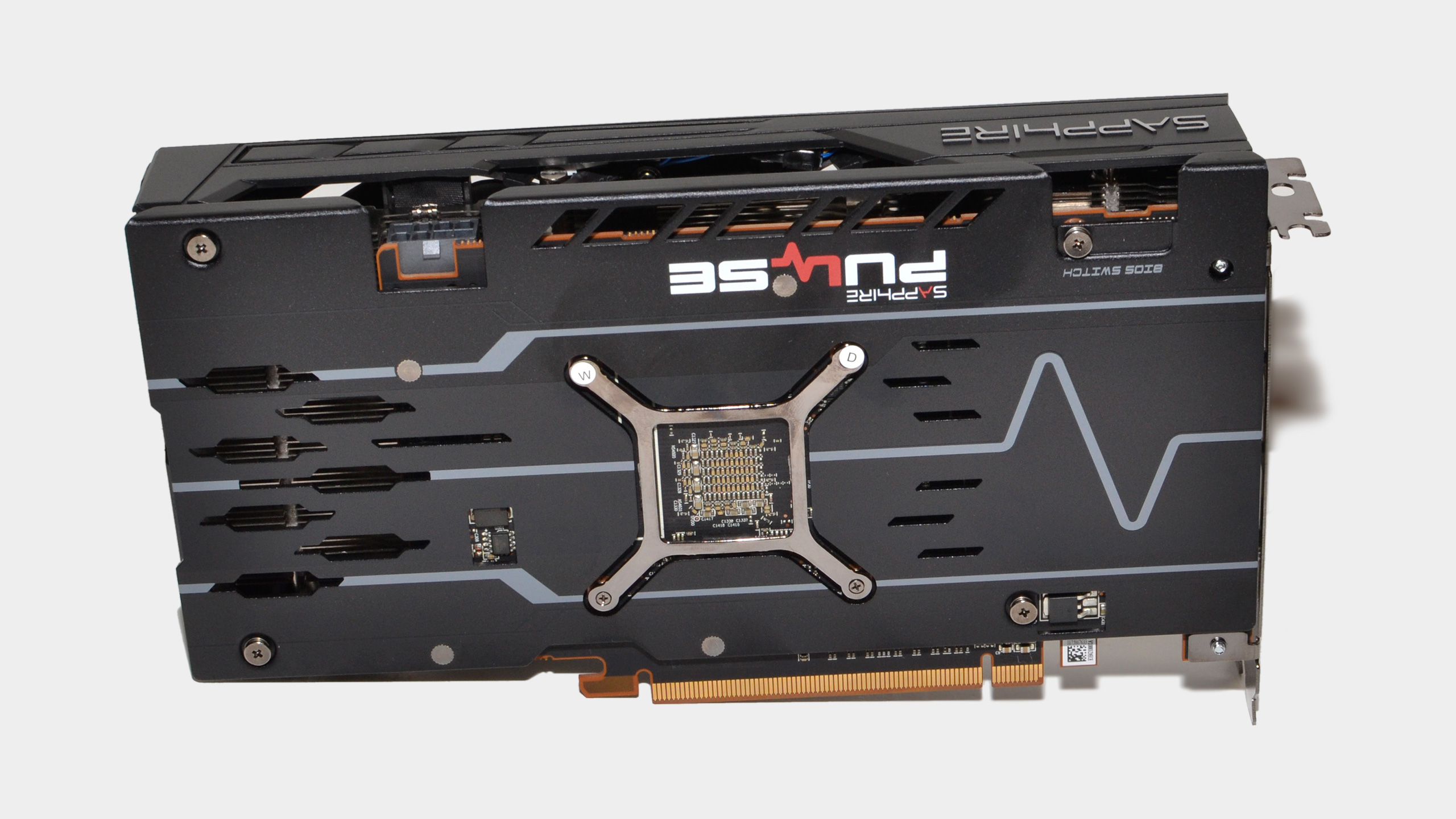
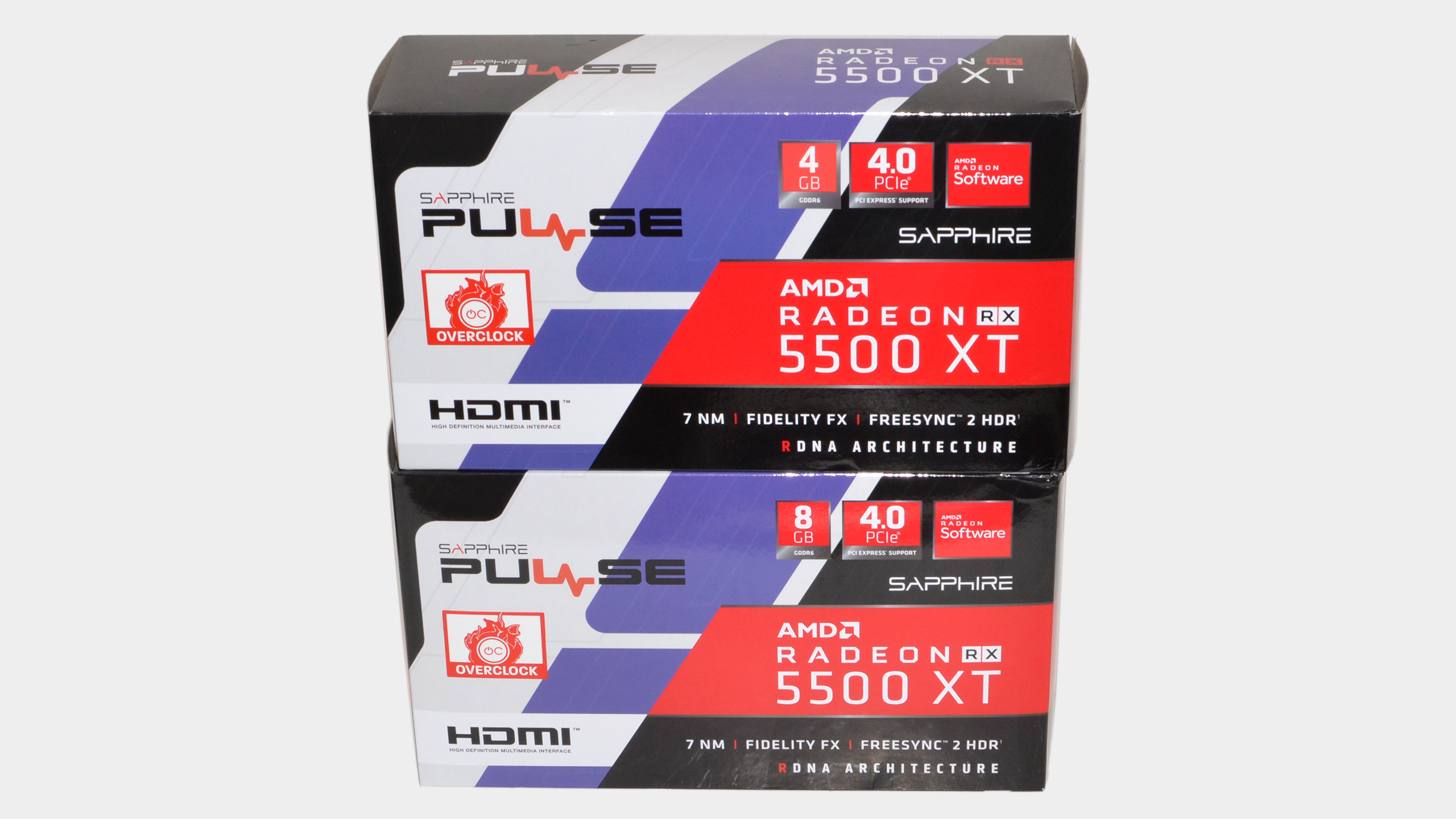
AMD sent us two RX 5500 XT Pulse edition cards for testing, one with 4GB and one with 8GB. Other than the VRAM, the cards look identical and feature dual cooling fans, with a single 8-pin power connector. The cards also use AMD's reference clocks, up to 1845MHz boost, though plenty of other 5500 XT models with modest factory overclocks are available.
Timing constraints and some initially odd test results have delayed this review slightly. I ended up retesting every game on the 4GB card in the past 12 hours just to confirm numbers. (If you're wondering, the new numbers are about three percent higher overall, and up to 10 percent higher in a few select cases, which is why I retested.) I haven't had a chance to retest the 8GB card yet, but I'll have a separate review of that card as soon as I'm able.
The naming of AMD's RX 5000 series still feels weird to me. It would have made far more sense to call the 8GB card the XT. Then you'd know the XT is the enhanced card with more RAM. The specs on the OEM-only RX 5500 and the retail RX 5500 XT are mostly the same, except the XT models are available with 8GB insteal of just 4GB, have a 130W TDP (vs. 150W), and slightly higher 'game clock.' In practice, the 4GB 5500 and 5500 XT should have nearly identical performance, outside of any card specific tweaking of clockspeeds. Regardless, the 8GB card will be faster in many recent games where 4GB isn't quite enough—not to mention allowing games like Red Dead Redemption 2 to run at higher quality settings.

Radeon RX 5500 XT 4GB gaming performance
I've tested all GPUs in my standard testbed, which features an overclocked Core i7-8700K running at 5.0GHz. For budget and midrange cards, the CPU will be far less of a factor, but it's good to keep things consistent. The CPU shouldn't hold back any of the cards. I've tested 11 games for this review, which should give a fair representation of performance. Certain games may favor AMD or Nvidia hardware, but the overall average performance with this many games will be a good snapshot of what to expect.
Testing is done at 1080p 'medium' and 'ultra' settings (which may go by different names, depending on the game), as well as 1440p and 'ultra' settings. 4K isn't something you should be thinking about with this level of hardware. Each game is tested multiple times, using the best result. Where there are large discrepancies between test runs, I've rechecked performance with additional testing to ensure the results are accurate and meaningful.



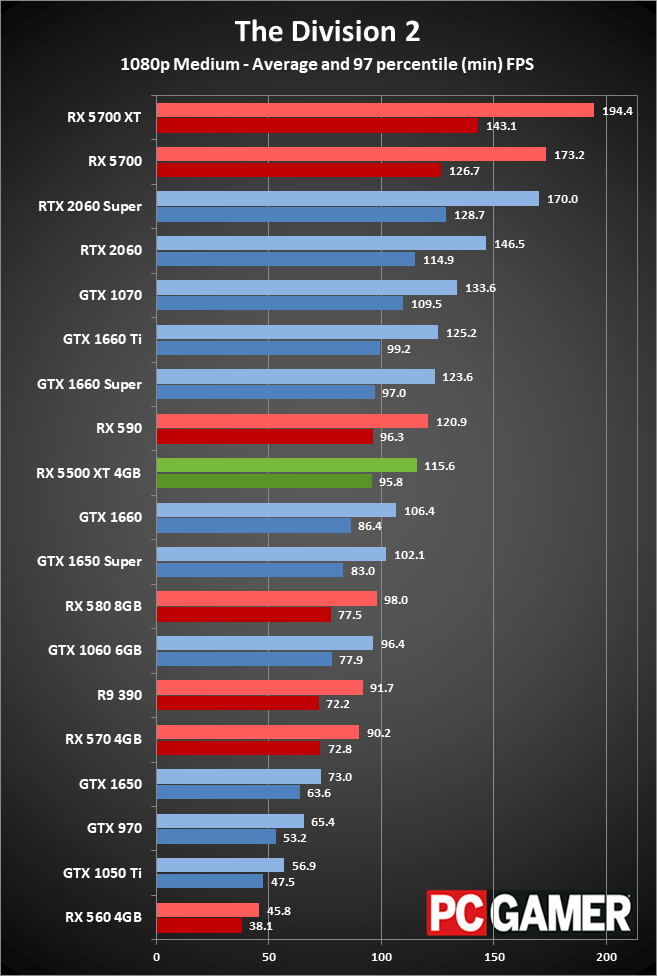
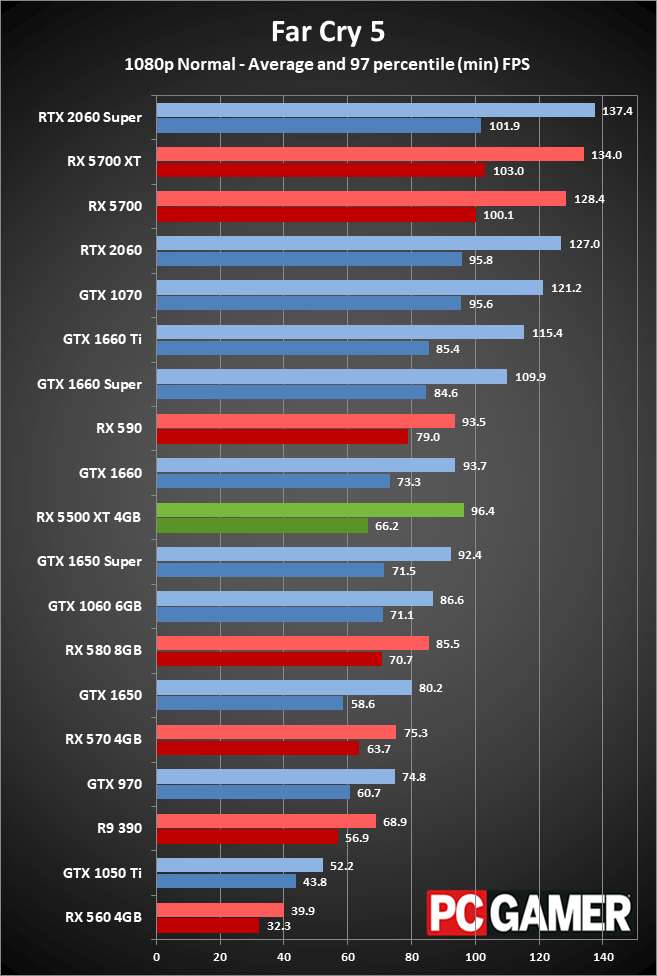
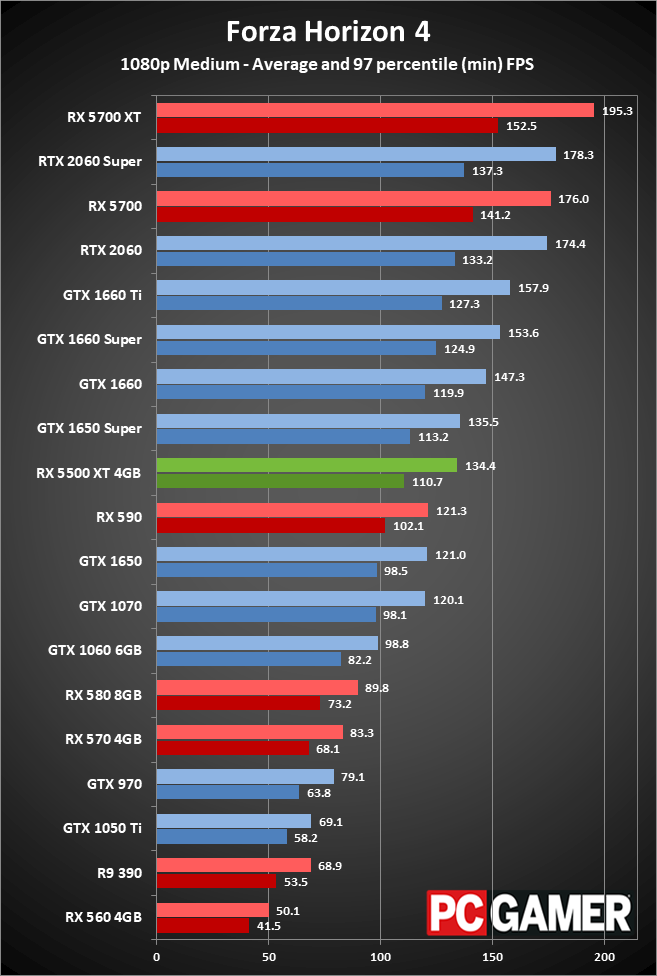





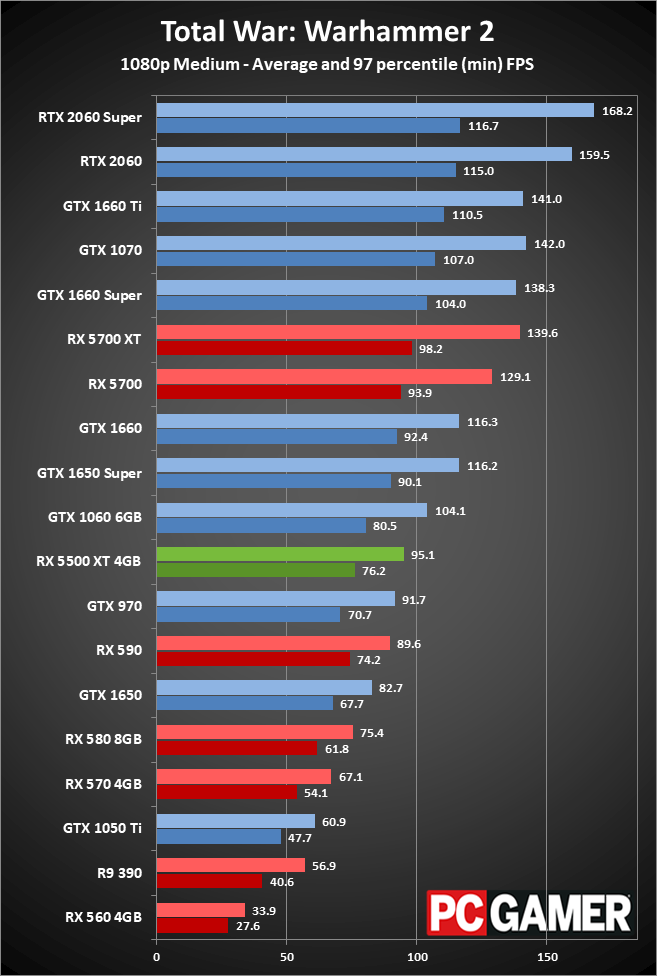
Starting with 1080p medium, the RX 5500 XT 4GB and GTX 1650 Super are effectively tied in overall performance. However, in the individual games, the two swap leads and there's a gap of up to 15 percent. The Division 2, Far Cry 5, Metro Exodus, and Strange Brigade all favor the RX 5500 XT; Hitman 2, The Outer Worlds, and Total War: Warhammer 2 favor the 1650 Super. The cards are within two percent of each other in the remaining four games.
Equally important is that both GPUs manage to average more than 60 fps at these settings in every game (except Metro Exodus on the 1650 Super). Minimum fps also stays above 60 in nearly every game, again with only two exceptions: Metro Exodus—which isn't too surprising, as that game can punish even the fastest GPUs—and The Outer Worlds. The RX 5500 XT, and AMD GPUs in general, tend to have more stuttering and low fps hitches in The Outer Worlds, partly because of the game engine, but drivers are likely also a factor. Still, 1080p and medium to high settings is certainly within reach of these cards, and esports games like CSGO and Overwatch will easily run at 120 fps or more.
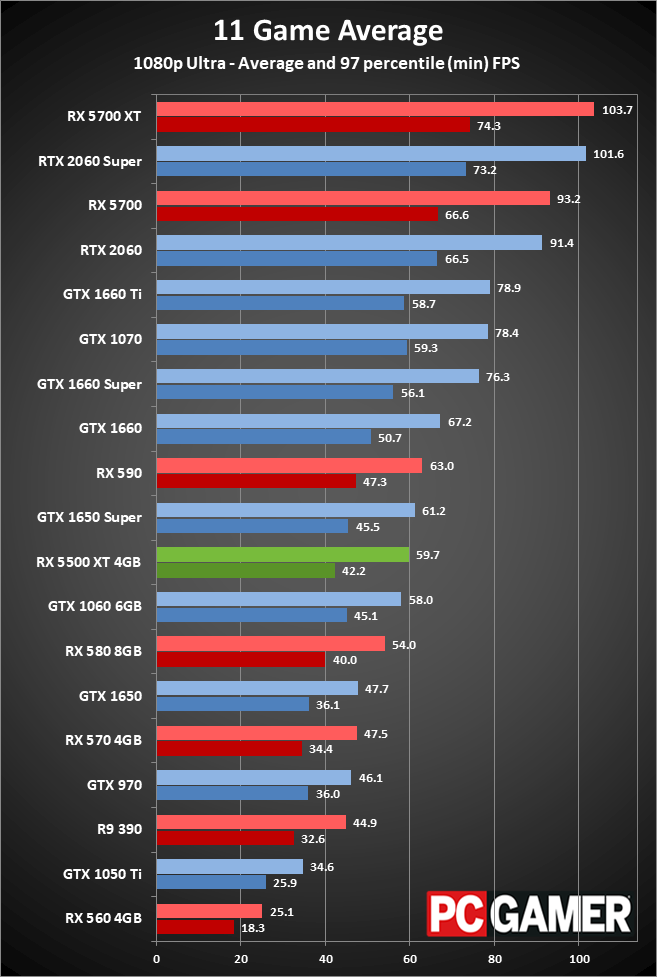

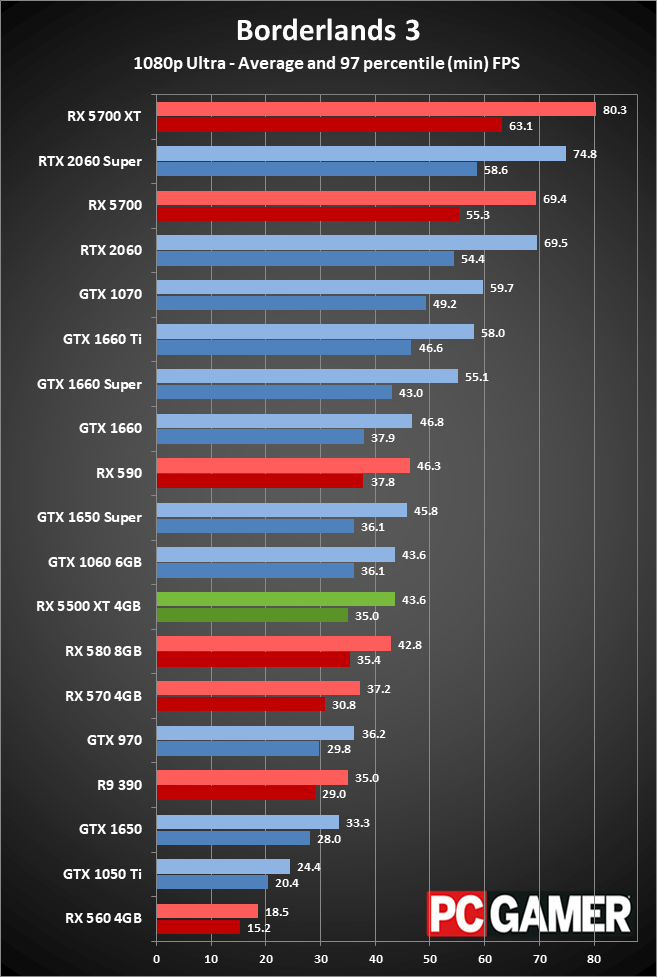

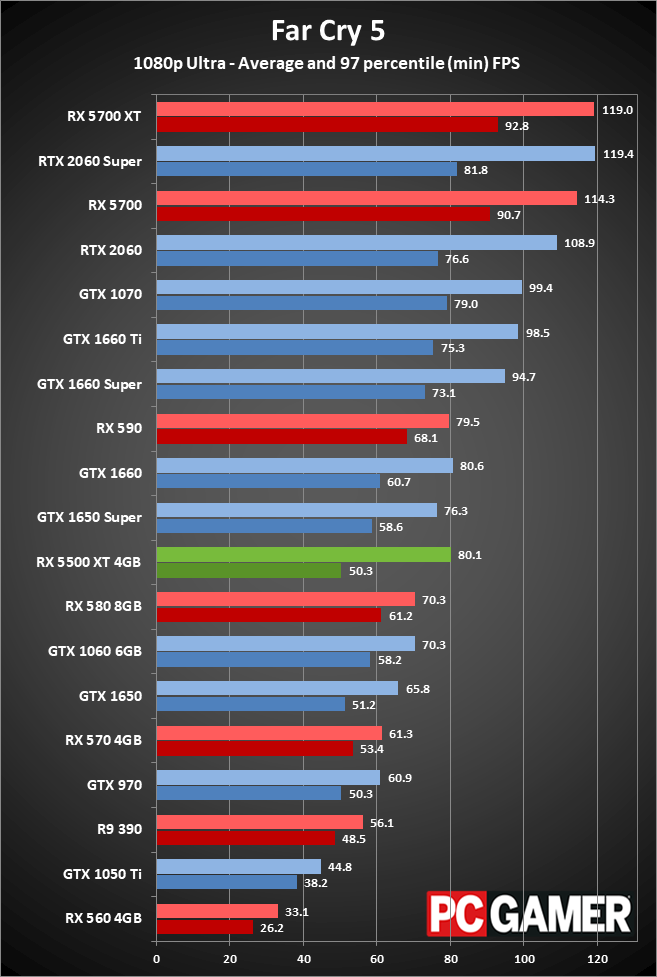
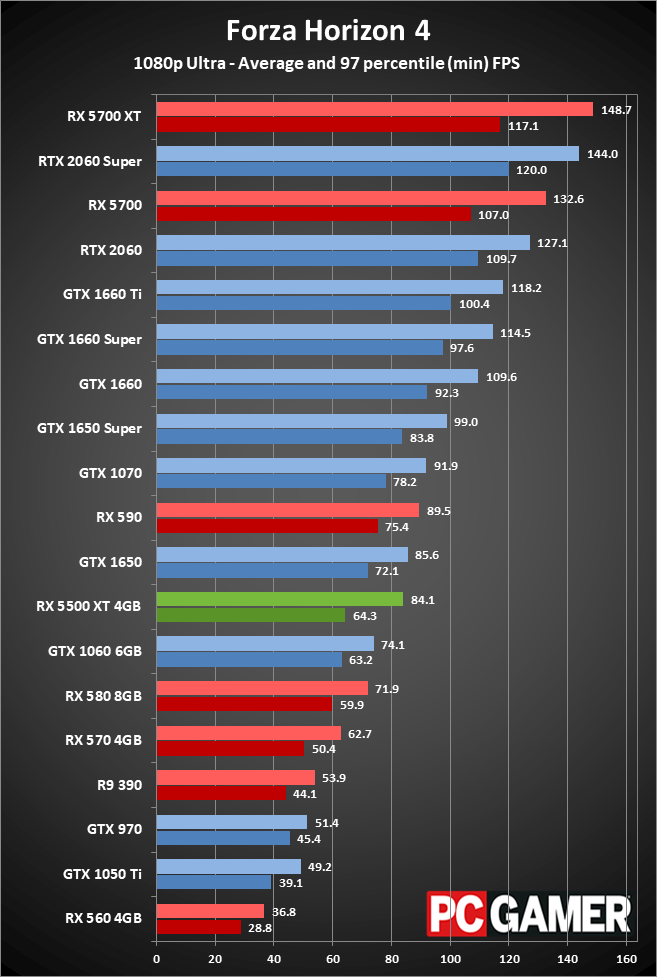
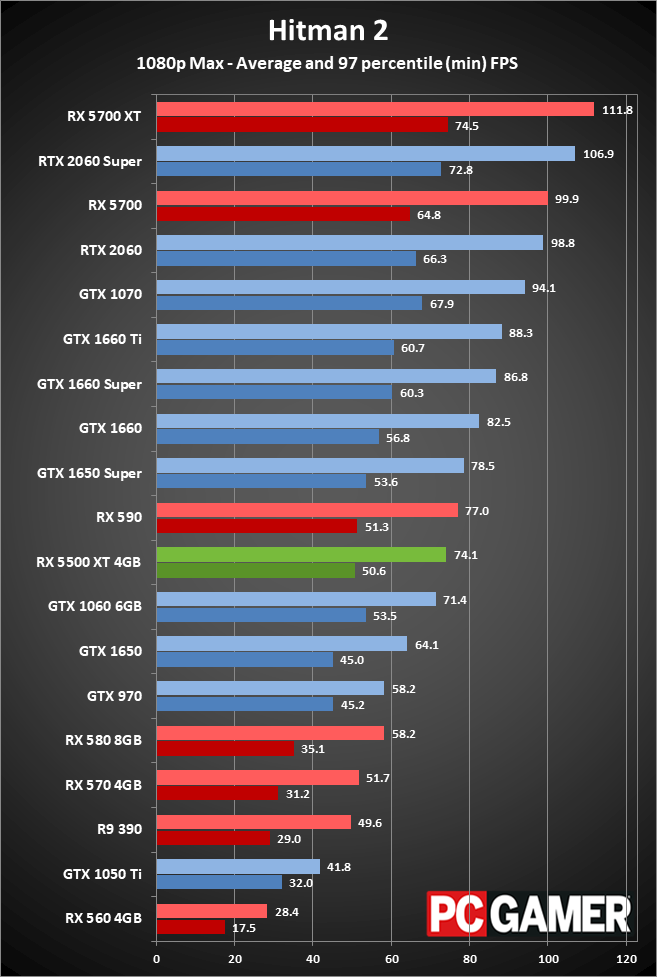
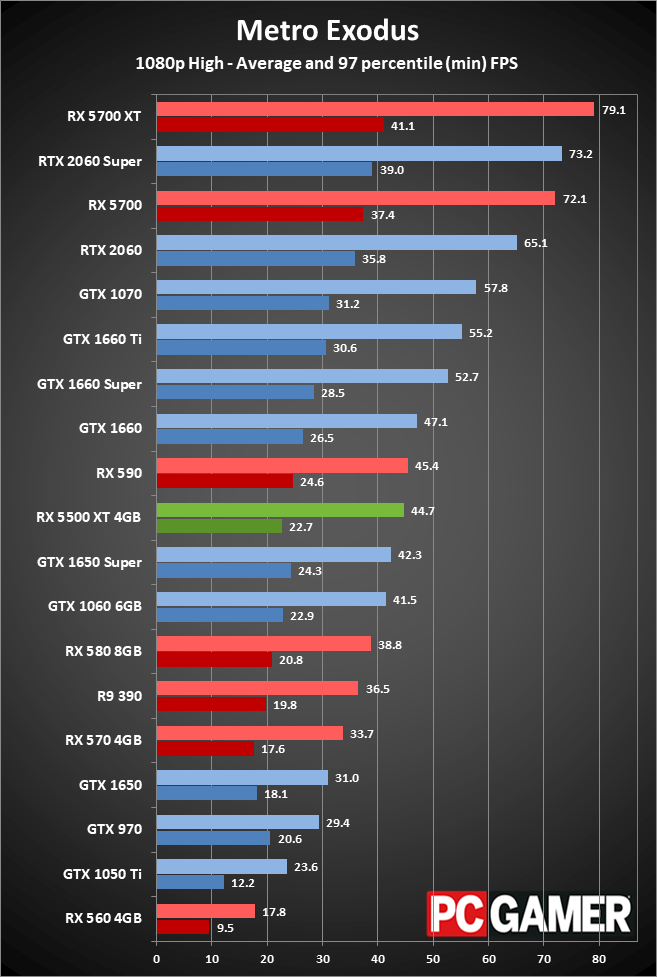

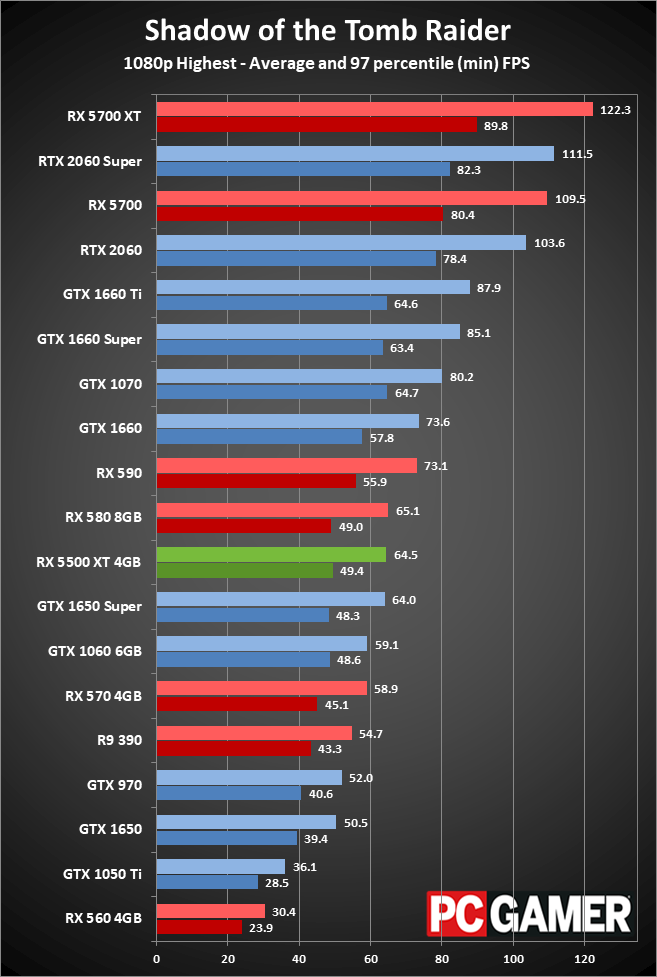

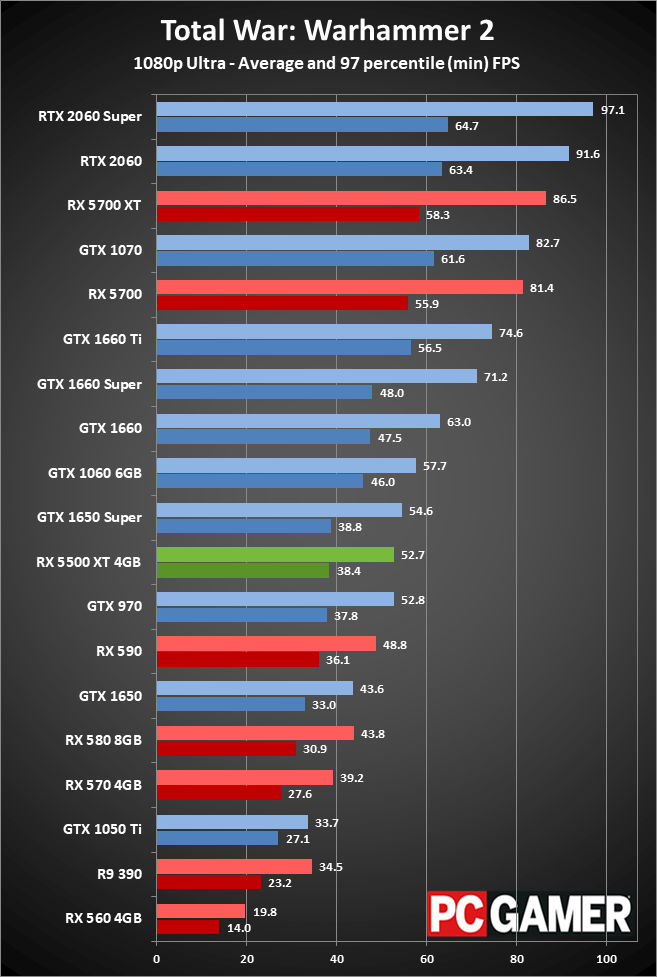
Jumping to ultra quality drops performance a lot on the budget cards. The 1650 Super ends up with a fractionally higher 2 percent overall lead, and minimum fps favors Nvidia by 8 percent on average, but there are five games for each GPU where the average fps falls below 60. Several of the games also push beyond 4GB of VRAM use, which is a big part of the larger drop in fps.
I don't have final numbers on the 8GB 5500 XT yet, but earlier testing has it tied with the 4GB card at 1080p medium, with multiple games showing double digit percentage improvements in performance. Far Cry 5 (with HD textures), Assassin's Creed Odyssey, Forza Horizon 4, and Shadow of the Tomb Raider all benefit a lot from additional VRAM.


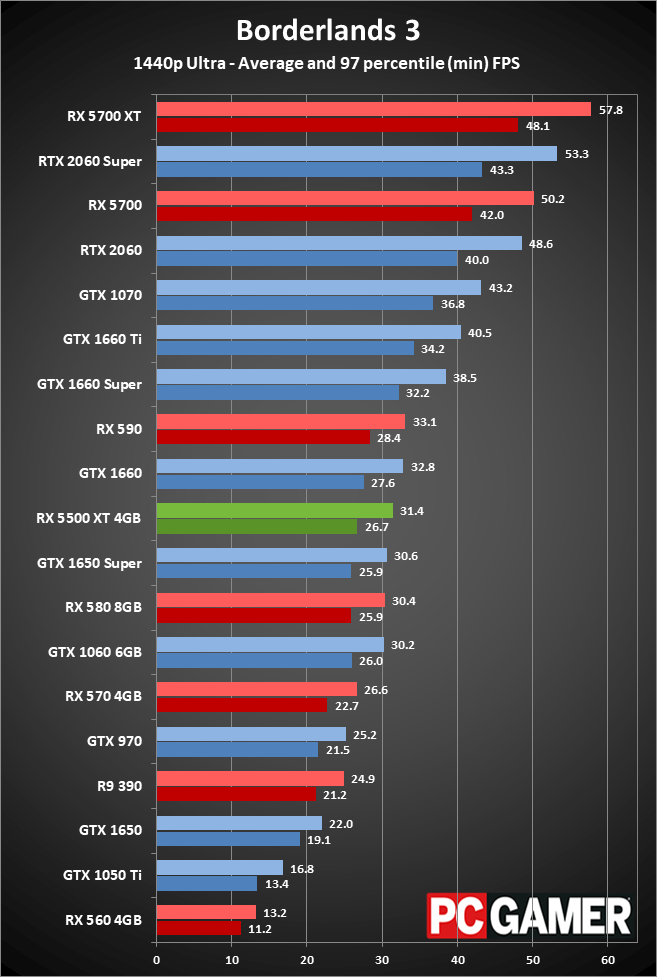

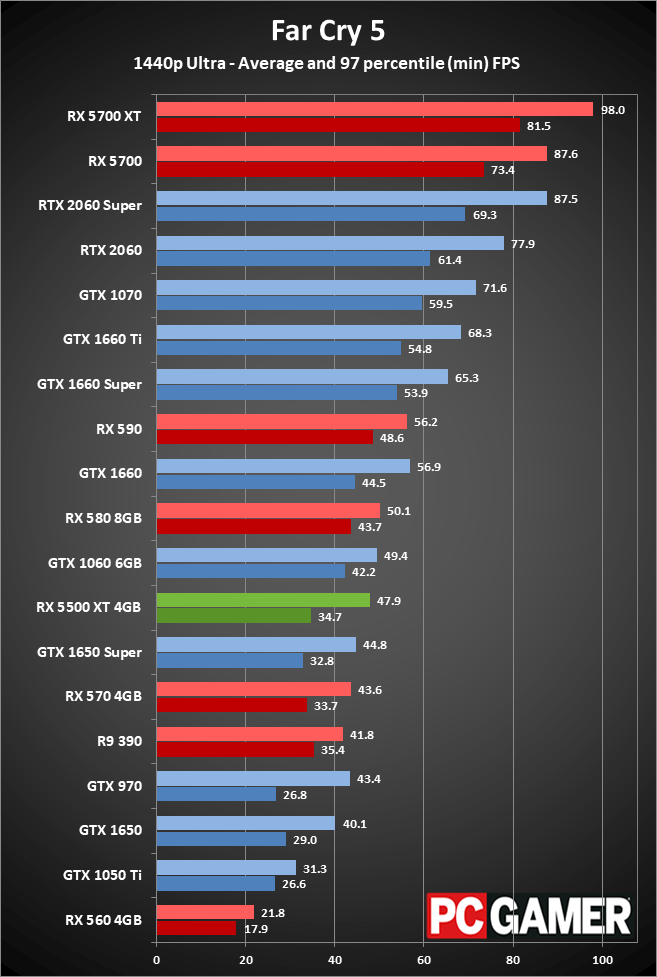
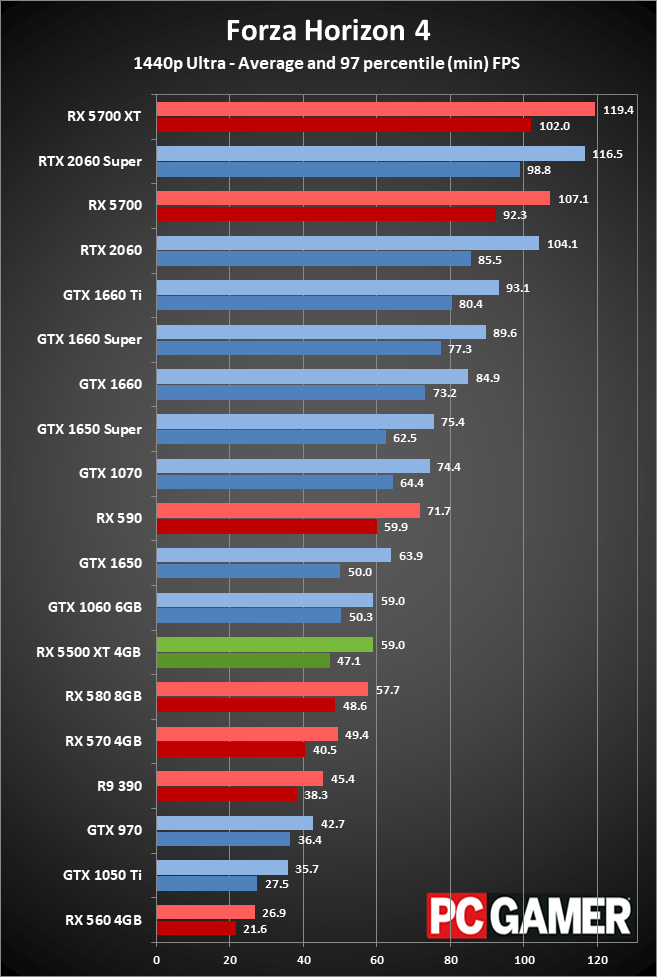


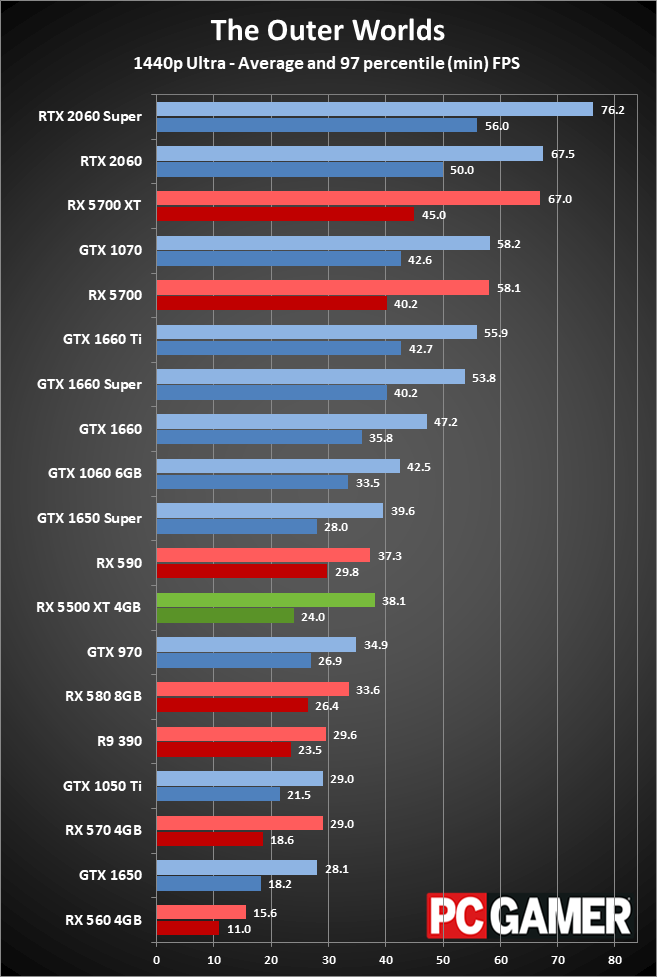
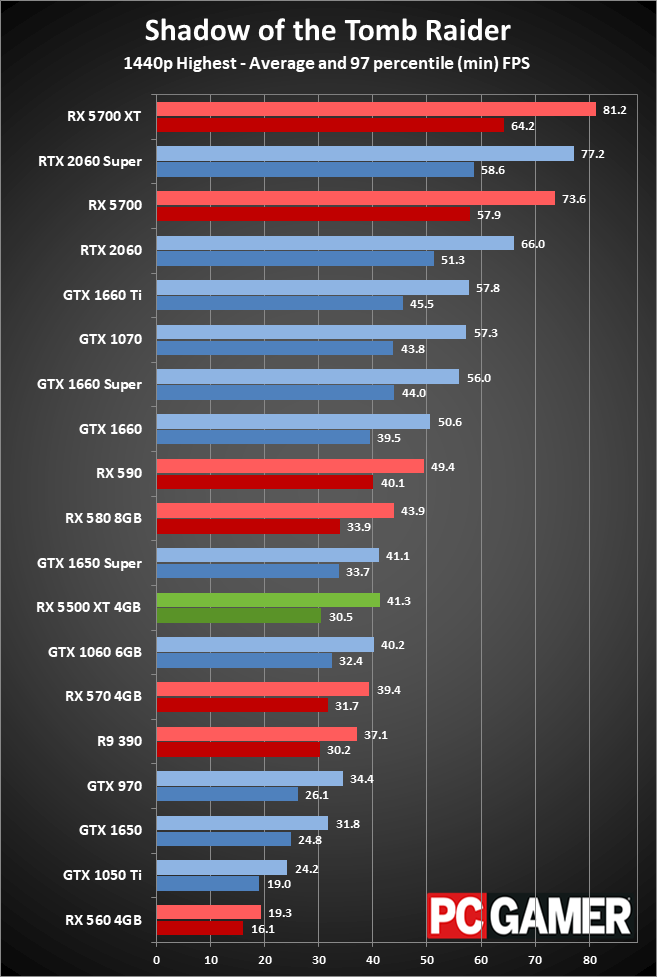
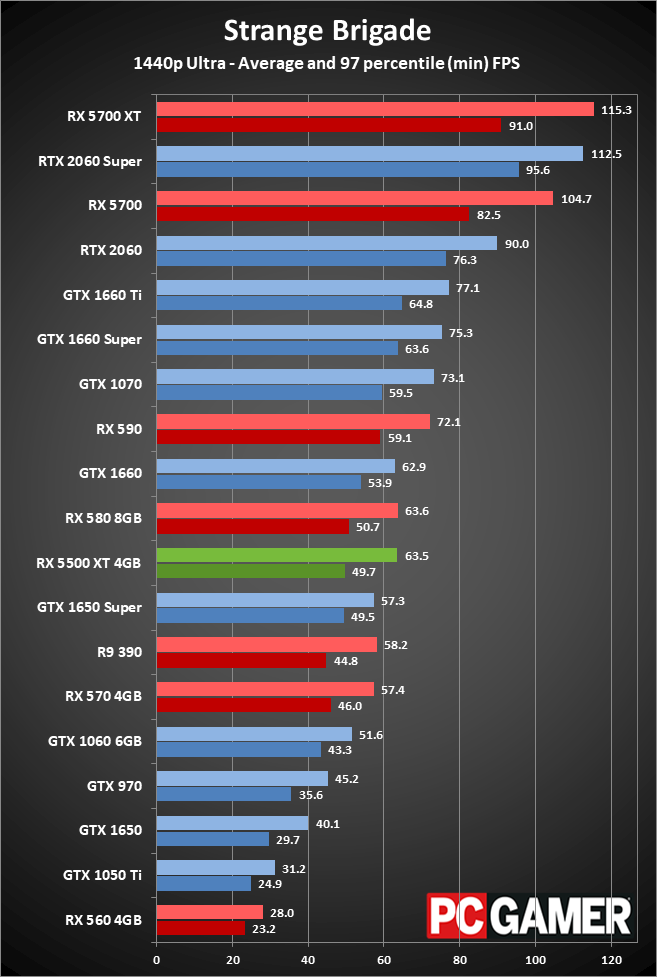

Most of the GPUs in these charts aren't really intended for 1440p ultra gaming—basically, you'd want an RTX 2060 or RX 5700 or above to comfortably handle this resolution and setting. You could drop to 1440p medium and still get decent performance with the RX 5500 XT, at least in several of the games, but you'd be better off with a faster card, and preferably 6GB or 8GB VRAM. The cards with only 4GB clearly fall behind here.

AMD Radeon XT 5500 XT 4GB closing thoughts
AMD's RX 5500 XT 4GB ends up performing almost exactly as expected. AMD's own figures suggest that it should be slightly faster than the 1650 Super overall, but game selection and individual graphics card models can play a role. (For example, the MSI 1650 Super Gaming X I used for testing comes with a minor factory overclock.) There are games that strongly favor AMD or Nvidia hardware, but there are far more games where the difference between the cards is going to be negligible.
Basically, it's a tie. Both the RX 5500 XT 4GB and GTX 1650 Super are fine cards. If you have strong feelings one way or the other, I don't think the performance aspect can over come them. AMD's game bundle on the other hand might.
If you're in the market for a budget gaming solution, and you don't already have something like an RX 570/580 or GTX 1060 or better, the RX 5500 XT cards make sense. However, they're also more expensive than previous budget solutions like the RX 560 and even the RX 570. Both AMD and Nvidia have effectively moved up a tier in pricing on the latest generation of graphics card hardware.
It's also interesting to look at the RX 570 4GB and RX 5500 XT, just to see how much the architectural enhancements and 7nm tech have helped AMD. The 5500 XT only has 1408 GPU cores, while the 570 has 2048 cores. In terms of theoretical computational performance, the new GPU is only about two percent faster (thanks to higher clockspeeds). In practice, however, it's 25-30 percent faster in 1080p gaming performance. That's almost all thanks to the Navi / RDNA architecture. That's great to see, and hopefully we'll see similar gains with RDNA 2 (or whatever comes next).
As with the GTX 1650 Super, however, I'd be careful about buying a budget GPU with 4GB VRAM right now—especially if you want it to last a few years. A lot of recent games already require medium or high settings to get 60 fps, and with the next-gen consoles arriving in 2020, things are only going to get worse. You can still run just about any game at reasonable performance levels with a $150 budget GPU, but a $225 graphics card can improve performance by 30 percent or more. That's enough to make 1080p ultra viable, and probably get you through another year or two of increasingly demanding games.
The Radeon RX 5500 XT 4GB is a good budget card, and the architectural enhancements help it outperform the previous generation AMD hardware, but the limited VRAM can be a handicap.
Jarred's love of computers dates back to the dark ages when his dad brought home a DOS 2.3 PC and he left his C-64 behind. He eventually built his first custom PC in 1990 with a 286 12MHz, only to discover it was already woefully outdated when Wing Commander was released a few months later. He holds a BS in Computer Science from Brigham Young University and has been working as a tech journalist since 2004, writing for AnandTech, Maximum PC, and PC Gamer. From the first S3 Virge '3D decelerators' to today's GPUs, Jarred keeps up with all the latest graphics trends and is the one to ask about game performance.


